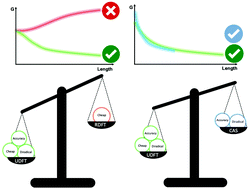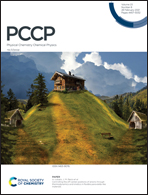The effect of spin polarization on the electron transport of molecular wires with diradical character†
Abstract
Some of the most promising materials for application in molecular electronics and spintronics are based on diradical chains. Herein, the proposed relation between increasing conductance with length and diradical character is revisited using ab initio methods that account for the static electron correlation effects. Electron transmission was previously obtained from restricted single determinant wavefuntions or tight-binding approximations, which are unable to account for static correlation. Broken Symmetry Unrestricted Kohn–Sham Density Functional Theory (BS-UKS-DFT) in combination with electron transport analysis based on electron deformation orbitals (EDOs) reflects an exponential decay of the electrical conductance with length. Also, other important effects such as quantum interference are correctly accounted for, leading to a decrease of the conductance as the diradical character increases. As a proof-of-concept, the electrical conductance obtained from BS-UKS-DFT and CASSCF(2,2) wavefunctions were compared in diradical graphene strips in the frame of the pseudo-π approach, obtaining very similar results.



 Please wait while we load your content...
Please wait while we load your content...